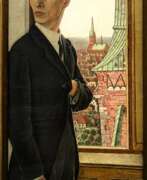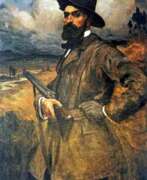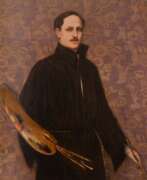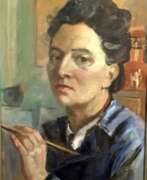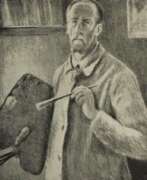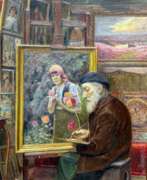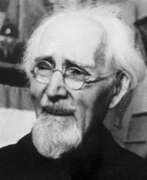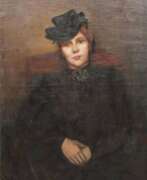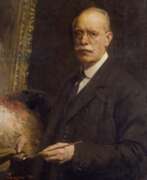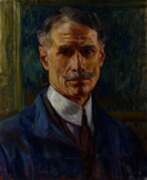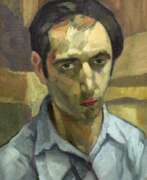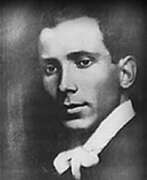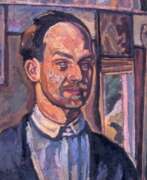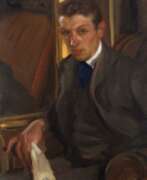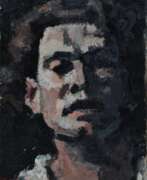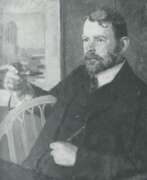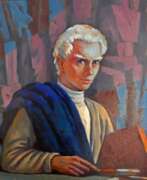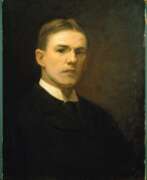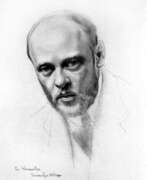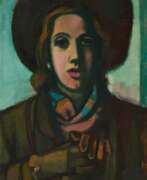Self-portrait Art Nouveau
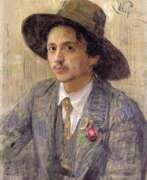

Isaak Israelievich Brodsky (Russian: Исаак Израилевич Бродский), a distinguished Russian artist, was renowned for his contributions to painting and teaching. Born in Sofievka, Russian Empire, Brodsky's artistic journey led him to become a pivotal figure in the Soviet art scene, primarily recognized for his realistic portraits and social realist works. His dedication to capturing the essence of his subjects, combined with a unique sensitivity to color and form, allowed his art to transcend mere representation, offering insights into the culture and political climate of his time.
Throughout his career, Brodsky was closely associated with significant cultural and political developments in Soviet Russia, becoming an official artist of the Soviet regime. His works, such as the iconic portraits of Lenin and other political figures, not only exemplify his skill but also serve as historical documents, offering a glimpse into the era's social fabric. His commitment to realism and the portrayal of Soviet ideals earned him a prominent place in the art world, influencing generations of artists through his role as a teacher and mentor at the Repin Institute of Arts.
Brodsky's legacy is preserved in numerous museums and galleries, with his masterpieces forming an integral part of Russia's cultural heritage. His ability to intertwine art with historical narrative has made his work a subject of study for art collectors and experts alike. For those intrigued by the depth and historical significance of Soviet art, Brodsky's oeuvre offers a fascinating exploration into the power of visual storytelling.
For collectors and experts keen on delving deeper into the rich tapestry of Russian art, staying informed about Isaac Israelievich Brodsky's work is essential. Signing up for updates ensures exclusive access to news on product sales and auction events dedicated to Brodsky's art, providing a unique opportunity to engage with the history and culture he so vividly depicted. Join us in celebrating the legacy of a true maestro of painting, whose works continue to inspire and captivate audiences worldwide.
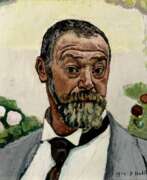

Ferdinand Hodler was one of the best-known Swiss painters of the nineteenth century. His early works were portraits, landscapes, and genre paintings in a realistic style. Later, he adopted a personal form of symbolism which he called "parallelism".
Much of Hodler's work is in public collections in Switzerland. Other collections holding major works include the Musée d'Orsay in Paris, the Metropolitan Museum of Art in New York, and the Art Institute of Chicago.
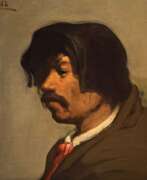

Xavier Timoteo Martínez was a pivotal figure in the California art scene of the late 19th and early 20th centuries. Born in Guadalajara, Mexico, in 1869, Martínez moved to the United States, where he became a celebrated painter known for his tonalist style, monotypes, etchings, and silverpoint works. His early years were marked by a deep engagement with art, leading him from drawing his classmates in public school to studying pre-Columbian archaeology and painting an oil copy of Titian's "Entombment" at the Liceo de Varones. Martínez's journey to the United States was fostered by the U.S. consul Alexander Coney and his wife, Rosalia LaBastida, who brought him to San Francisco in 1893.
Xavier Martínez's artistic and teaching career flourished in California, where he co-founded the California Society of Artists and taught at the California School of Arts and Crafts. His work was featured in numerous exhibitions, including the Panama Pacific International Exhibition, and his influence extended through his teaching and writings on art history. Xavier Martínez's personal life was intertwined with his artistic journey; he married Elsie Whitaker, with whom he had a daughter, Micaela Martinez DuCasse, who also pursued an artistic career.
Xavier Martínez's legacy is preserved in various museums, reflecting his significant contributions to the Californian and American art landscapes. His work, deeply influenced by his Mexican heritage and his experiences in California, offers a unique perspective on the natural and cultural environments of his time.
For collectors and experts in art and antiques, Xavier Timoteo Martínez's paintings represent a crucial chapter in the history of American art, particularly within the context of the Tonalism movement and the artistic developments in California during the late 19th and early 20th centuries.
To stay updated on exhibitions and sales featuring Xavier Timoteo Martínez's work, consider signing up for newsletters from galleries and museums that hold his pieces. This subscription will keep you informed about opportunities to appreciate and acquire works by this remarkable artist, ensuring you remain connected to the evolving landscape of historical and contemporary art.
